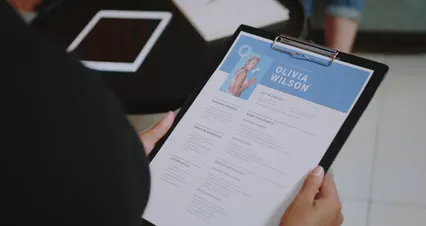Introduction
The ASHP Match Program, managed by the American Society of Health-System Pharmacists, plays a vital role in pharmacy residency placements. Each year, thousands of pharmacy graduates seek to advance their careers through this structured system. The program facilitates an orderly process that matches applicants with residency programs, ensuring a smooth transition into professional practice.
Understanding match statistics is crucial for applicants and pharmacy schools alike. For applicants, these statistics provide insights into competitiveness and trends within the residency landscape. They reveal how many candidates succeed in securing positions and highlight areas for improvement. For schools, this data informs program development and helps align educational practices with market demands.
In this article, readers will discover key trends, comprehensive data analyses, and predictions regarding future ASHP Match outcomes. We’ll explore past statistics, current match rates, and factors influencing applicants’ success. By the end, you’ll be equipped with valuable insights to navigate the ASHP Match landscape effectively.

Speaking of being prepared, check out this ASHP Match Program Guidebook that provides essential insights into navigating the match process. This guidebook is like having a secret weapon in your back pocket!
Understanding the ASHP Match Program
What is the ASHP Match?
The ASHP Match is a systematic process that pairs pharmacy graduates with residency programs. It ensures a fair and equitable selection process for both applicants and programs. Essentially, it maximizes the chances for graduates to secure their desired training opportunities while helping programs identify the best candidates.
The match process consists of two phases. Phase I occurs in March and includes the majority of positions. Applicants submit their ranked preferences, and programs rank their candidates. The results are announced, revealing who matched with which residency. Phase II follows for those who did not secure positions in Phase I. It allows candidates to apply for unfilled positions, providing a second chance to find a residency.
This structured approach benefits everyone involved, streamlining what can otherwise be a chaotic and competitive process. By understanding how the ASHP Match works, candidates can better prepare and enhance their chances of matching successfully.
To help you ace those interviews, consider the Pharmacy Residency Interview Prep Book. This book is packed with tips and strategies to help you showcase your skills and stand out from the crowd!
Key Terminology
PGY1: This stands for Postgraduate Year 1 residency, which is the first year of pharmacy residency training. It typically emphasizes foundational skills in patient care, pharmacy operations, and clinical practice.
PGY2: This is the second year of residency training, focusing on a specific area of pharmacy practice. It allows residents to gain advanced skills and deepen their expertise.
Early Commitment: A process where pharmacy students secure a PGY2 residency position before completing their PGY1 year. This helps students to transition smoothly into specialized training.
Match Rate: The percentage of applicants who successfully match with residency programs during a given phase of the ASHP Match. It reflects the competitiveness of the residency process.
Applicant Pool: The total number of candidates who submit applications for residency positions during a specific match cycle. This number can fluctuate yearly based on various factors, including the number of pharmacy graduates.
Current Match Statistics
2024 ASHP Match Overview
The 2024 ASHP Match has been an exciting event for pharmacy graduates. This year, a record-breaking 4,916 applicants competed for 5,872 residency positions. This includes a notable 10% increase in available spots compared to previous years. The match rate for Phase I saw an impressive 83%, showing a slight improvement from 82% in 2023. This indicates that more students are successfully securing their desired positions.
When compared to 2023, the number of applicants has increased slightly. Last year, 4,890 individuals matched with 5,832 positions, leading to an overall match rate of 82%. The upward trend in match rates and positions available suggests a promising future for pharmacy graduates.

For those looking to stay organized during this process, a Planner for Residency Application Tracking can be a lifesaver. It helps you keep track of deadlines, interviews, and important documents like a pro!
Phase-wise Analysis
Phase I Statistics
In Phase I of the 2024 Match, 4,916 applicants submitted their rank lists. Out of the 5,872 positions, 3,960 were filled during this phase. This resulted in a success rate of about 81% for applicants who participated. That’s a solid start!
The increasing success rate can be attributed to several factors. More applicants are adequately preparing for interviews and honing their applications, making them stand out from the competition. This improvement reflects the growing awareness among pharmacy students about the importance of residency training.

Phase II Statistics
Following Phase I, 956 positions remained available for the second phase of the Match. This indicates a competitive environment for those who didn’t secure placements in Phase I. The applicant pool for Phase II is typically made up of individuals who are ready to take a second swing at finding a match.
The Phase II match rates have historically been lower than Phase I. However, this year, candidates must stay hopeful and prepared. With 721 programs participating in Phase II, candidates have plenty of opportunities to find a suitable match. The informal post-match scramble also plays a crucial role in connecting unmatched candidates with programs that still have openings.
The ASHP continues to provide resources and support to help candidates navigate both phases effectively. Those who didn’t match during Phase I should take advantage of these resources and remain optimistic about their chances in Phase II. With the right preparation and mindset, many can still achieve their residency goals.
Speaking of preparation, consider checking out the Kaplan Pharmacy Residency Interview Guide. It’s an invaluable resource for mastering those tricky interview questions and making a lasting impression!
Historical Match Data
Longitudinal Analysis
Let’s take a stroll down memory lane, shall we? From 2020 to 2024, the ASHP Match has showcased some fascinating statistics. In 2020, for instance, the number of applicants was around 7,525, with 5,895 submitting their rankings. Fast forward to 2024, and we see a remarkable increase. This year, 4,916 applicants vied for 5,872 positions, marking a significant uptick in both applicants and available residencies.
Throughout these years, the overall trends point to a steady rise in both applicant numbers and positions. In 2020, the total match rate hovered around 66%. Fast forward to 2024, and we’re seeing match rates climb to 83% in Phase I alone. This upward trajectory signifies a growing interest in pharmacy residency programs, hinting that more graduates recognize the value of postgraduate training.

And while you’re at it, don’t forget to grab a copy of the Pharmacy Residency: A Comprehensive Guide. This book covers everything you need to know about the residency process and will help you get ahead!
Key Trends
Now, let’s focus on some key trends that have emerged over these years. One noticeable pattern is the increasing number of early commitments to PGY2 positions. In 2024, early commitments surged by 10% from the previous year. This indicates that students are becoming more strategic about their residency paths—talk about being ahead of the game!
Additionally, the diversity of residency programs has expanded, attracting a wider array of applicants. As programs adapt to the ever-evolving healthcare landscape, they are more inclusive, thus appealing to a broader candidate pool. The match rates have also improved due to better preparation among applicants. It seems that more students are honing their interview skills and polishing their applications, making them competitive in this demanding environment.
Overall, the historical data paints a promising picture for the future of pharmacy residency matches. As the number of positions continues to rise and applicants become more prepared, the landscape of the ASHP Match is likely to flourish.
Factors Influencing Match Outcomes
Applicant Characteristics
Demographics
Successful candidates in the ASHP Match come from diverse backgrounds, but a few common threads tie them together. Many of these candidates hail from highly regarded pharmacy programs, often boasting impressive GPAs. For instance, top-performing students typically have GPAs above 3.5, which seems to be the golden ticket in this competitive arena.
Moreover, previous experience in clinical settings, whether through internships or volunteering, also plays a pivotal role in shaping successful candidates. Programs often seek individuals who demonstrate a commitment to patient care and an understanding of pharmacy practice.

Preparation
Let’s be honest—preparation is key! Candidates who invest time in interview preparation and application quality tend to fare better in the match process. Mock interviews, personalized feedback, and thorough research on prospective programs are just a few strategies that can set a candidate apart.
A well-crafted application tells a compelling story. It showcases not only academic achievements but also passion for the field. Candidates who can articulate their experiences and aspirations effectively often find themselves in a better position during the selection process. In a nutshell, preparation is more than just checking boxes; it’s about crafting a narrative that resonates with residency program directors.
If you’re looking to refine your personal statement, the Personal Statement Writing Guide for Pharmacy Residency is a must-have. It provides tips for writing a standout statement that highlights your unique qualifications!
Residency Program Characteristics
Types of Programs
Now, let’s talk about the variety of residency programs available. The ASHP Match includes a spectrum of options, from PGY1 general residencies to specialized PGY2 programs. Each type has unique characteristics that can influence match statistics.
For instance, PGY1 programs tend to attract a larger number of applicants since they serve as the foundational training for many pharmacists. In contrast, PGY2 programs, while fewer in number, often present higher match rates as they cater to those who have already completed a PGY1 residency and are seeking specialization.
As more programs adapt to the changing needs of healthcare, we see innovations in their offerings. Programs focused on specialized areas like oncology, pediatrics, or ambulatory care are becoming increasingly popular. This evolution not only enriches the match experience but also aligns with the growing demand for specialized pharmacy services in practice.
In summary, the interplay between applicant characteristics, preparation, and the types of residency programs significantly shapes match outcomes. As the pharmacy landscape evolves, so too will the factors influencing success in the ASHP Match.
Program Popularity
When it comes to residency programs, some steal the spotlight more than others. For instance, PGY1 programs are consistently among the most sought-after options. This year, they attracted a whopping 4,916 applicants vying for 5,872 positions. Their popularity stems from the foundational skills they offer, preparing pharmacists for clinical practice. In contrast, PGY2 programs, while fewer, boast impressive match rates. This year’s PGY2 match rate skyrocketed to 98% for top programs, like the UNC Eshelman School of Pharmacy, proving that specialization is the name of the game.
The allure of these programs is undeniable. As clinical roles evolve, so does the demand for specialized training. It’s like a buffet: everyone wants a taste of the most delectable dishes. Programs focusing on oncology, pediatrics, and ambulatory care are particularly hot right now. They not only attract more applicants but also fill positions at higher rates.

External Influences
Market Demand
The pharmacy landscape is buzzing! The workforce demand for pharmacists has surged, and this ripple effect is felt in residency positions. As healthcare becomes more complex, the need for well-trained pharmacists is critical. A recent survey indicated that 46% of fourth-year pharmacy students applied for residency positions this year—up from 44% last year. This increase signals a recognition of the importance of residency training.
The ongoing public awareness campaign by ASHP aims to illuminate the value of pharmacy roles in health systems. By showcasing career opportunities, it encourages more students to pursue residency training. This, in turn, helps fill the gap between the number of graduates and available positions.

Changes in Pharmacy Education
Pharmacy education is also undergoing a transformation. As curricula adapt to meet contemporary healthcare needs, match statistics reflect these shifts. Recent revisions emphasize diversity, inclusion, and the competencies needed for modern practice. This evolution aligns with the growing focus on patient-centered care.
The impact of these changes is evident. As education evolves, students are better equipped to excel in residency matches. They enter the match process with enhanced skills and a clearer understanding of what programs seek. The emphasis on hands-on experiences and real-world applications is shaping a new generation of pharmacists ready to take on the challenges of today’s healthcare environment.
By understanding these dynamics, prospective candidates can better navigate their own paths. The interplay between program popularity, market demand, and educational changes is crucial for shaping future residency statistics. As these factors continue to evolve, they will undoubtedly influence the ASHP Match landscape in the years to come.
Adapting to Changes
The residency landscape is always shifting. Candidates must stay agile to navigate these changes effectively. First and foremost, it’s essential to stay updated on trends in pharmacy education and residency requirements. Engage with professional organizations, attend conferences, and follow relevant blogs. Knowledge is power, especially in a competitive field like pharmacy.
Networking is key. Building relationships with mentors and peers can provide insights that textbooks simply can’t offer. They can guide you through the maze of applications and interviews. Plus, who doesn’t love a good coffee chat about the latest match statistics?
Don’t overlook the importance of sharpening your skills. Whether it’s clinical skills or personal statements, continuous improvement is vital. Consider workshops or online courses that can enhance your qualifications. A little effort can go a long way in setting you apart from the crowd.

Speaking of workshops, check out these Professional Development Workshop Materials to enhance your learning experience and network effectively!
Lastly, maintain a positive mindset. The match process can be daunting. Remember, perseverance is often the secret ingredient to success. Keep your goals in sight, and be ready to adapt your strategies as needed. Flexibility is the name of the game!
Conclusion
In conclusion, understanding ASHP match statistics is crucial for both candidates and pharmacy programs. This article highlighted the significance of the ASHP Match Program and its role in shaping pharmacy careers. We explored key statistics from the 2024 match, revealing an impressive match rate of 83% in Phase I. This positive trend indicates a growing recognition of the value of residency training among pharmacy graduates.
Additionally, we discussed the evolving landscape of pharmacy education and its impact on match outcomes. Candidates must stay informed about changes and adapt their strategies accordingly. As the industry continues to grow, so does the competition for residency positions.
Staying updated on match statistics isn’t merely a numbers game; it’s a way to prepare for the future. Prospective residents must understand the trends and insights these statistics provide. Knowledge empowers candidates to tailor their applications and stand out in a crowded field.
Ultimately, the ASHP Match Program remains an essential stepping stone in the pharmacy profession. By keeping abreast of match statistics and trends, you can navigate the path to a successful residency with confidence.
FAQs
What is the ASHP Match?
The ASHP Match is a structured program that pairs pharmacy graduates with residency programs. It ensures a fair selection process for applicants and programs alike. Each year, thousands of candidates participate, hoping to secure a residency position that aligns with their career goals. The Match operates in two phases, allowing candidates a second chance if they do not secure a position in Phase I.
How can I improve my chances of matching?
Improving your chances in the ASHP Match starts with thorough preparation. Focus on crafting a compelling application. Highlight your clinical experiences, academic achievements, and passion for pharmacy. Mock interviews can help you refine your interviewing skills. Additionally, seek mentorship from experienced pharmacists who can provide valuable insights into the process.
What are the common pitfalls in the application process?
One common mistake is submitting generic applications. Tailor your materials to reflect your strengths and interests. Another pitfall is neglecting to prepare for interviews. Researching programs and practicing responses can significantly impact your performance. Lastly, be mindful of deadlines and ensure your application is complete and submitted on time.
What can I expect in Phase II of the Match?
Phase II of the Match offers candidates a second opportunity to secure a residency position. After Phase I results are announced, any unfilled positions become available. The applicant pool typically consists of those who did not match in Phase I. Candidates should be prepared to act quickly and apply widely to maximize their chances in this phase.
How do match statistics vary by pharmacy school?
Match statistics can vary significantly by pharmacy school. Factors influencing these outcomes include the school’s reputation, faculty support, and the resources available for students. For instance, schools with strong residency preparation programs often see higher match rates. It’s essential for candidates to research their school’s history and success rates in the ASHP Match to set realistic expectations.
Understanding the ASHP match statistics is essential for applicants to gauge their competitiveness and improve their chances of securing residency positions.
Please let us know what you think about our content by leaving a comment down below!
Thank you for reading till here 🙂
All images from Pexels




